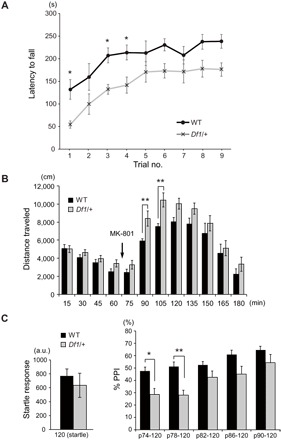Fig. 1. Motor coordination deficits, psychostimulant hypersensitivity, and sensorimotor gating deficits in Df1/+ mice.

(A) Latency to fall (in seconds) from the rotarod was scored three times per day over three consecutive days. WT control (n = 10) and Df1/+ (n = 10) mice were tested at 3.5 months of age. Statistical significance [two-way analysis of variance (ANOVA) with repeated measures: F1,18 = 14.09, P = 0.0015]; *P < 0.05 (Bonferroni post hoc test). (B) Locomotor activities [distance traveled (in centimeters)] measured in the open-field box before and after MK-801 challenge were plotted in 15-min bins. WT (n = 10) and Df1/+ (n = 10) mice were tested at 2 months of age. Statistical significance (two-way ANOVA with repeated measures: F1,18 = 4.763, P = 0.0426); **P < 0.01 (Bonferroni post hoc test). (C) Acoustic startle response (left) and PPI (%) of startle response (right) were evaluated. WT (n = 10) and Df1/+ (n = 10) mice were tested at 2 months of age. Statistical significance (two-way ANOVA with repeated measures: F1,18 = 8.528, P = 0.0091); *P < 0.05 and **P < 0.01 (Bonferroni post hoc test). a.u., arbitrary units.
